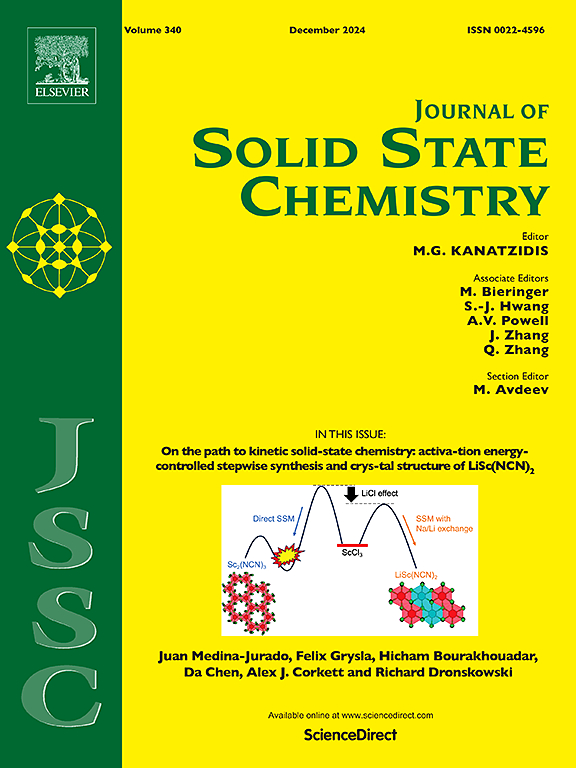Regulating zinc storage and transport characteristics of VO2(B) cathodes via cobalt introduction
IF 3.2
3区 化学
Q2 CHEMISTRY, INORGANIC & NUCLEAR
引用次数: 0
Abstract
The VO2(B) cathode materials maintain high stability during the zinc ion embedding/removal process, making it a research hotspot in positive electrode materials for water-based zinc ion batteries. However, its poor ion diffusion kinetics and intrinsic semiconductor properties have become the main reasons limiting the enhancement of the specific capacity and rate performance. Herein, the function of Co-doping on the microstructure, morphological characteristics, transport characteristics and electrochemical performances of the CoxV1-xO2(B) nanorods were comparatively investigated. The Co0.05V0.95O2(B) cathode has the highest specific capacity and unmatched cycle stability. The optimized electrochemical performance was mainly due to the synergistic optimization of grain distortion, grain size and oxygen vacancy inside the lattice. The electrochemical kinetics results show that the Co0.05V0.95O2(B) cathodes were capacitor and battery hybrid characteristics. The above conclusions provide a good idea and experimental verification for applying VO2(B) cathode in the water-based zinc ion batteries market.

引入钴调控VO2(B)阴极锌的储运特性
VO2(B)正极材料在锌离子嵌入/去除过程中保持了较高的稳定性,成为水基锌离子电池正极材料的研究热点。然而,其较差的离子扩散动力学和固有的半导体特性成为限制其比容量和倍率性能提高的主要原因。本文比较研究了共掺杂对cox_1 - xo2 (B)纳米棒的微观结构、形态特征、输运特性和电化学性能的影响。Co0.05V0.95O2(B)阴极具有最高的比容量和无与伦比的循环稳定性。优化的电化学性能主要是由于晶粒畸变、晶粒尺寸和晶格内氧空位的协同优化。电化学动力学结果表明,Co0.05V0.95O2(B)阴极具有电容器和电池的混合特性。上述结论为VO2(B)阴极在水基锌离子电池市场的应用提供了良好的思路和实验验证。
本文章由计算机程序翻译,如有差异,请以英文原文为准。
求助全文
约1分钟内获得全文
求助全文
来源期刊

Journal of Solid State Chemistry
化学-无机化学与核化学
CiteScore
6.00
自引率
9.10%
发文量
848
审稿时长
25 days
期刊介绍:
Covering major developments in the field of solid state chemistry and related areas such as ceramics and amorphous materials, the Journal of Solid State Chemistry features studies of chemical, structural, thermodynamic, electronic, magnetic, and optical properties and processes in solids.
 求助内容:
求助内容: 应助结果提醒方式:
应助结果提醒方式:


